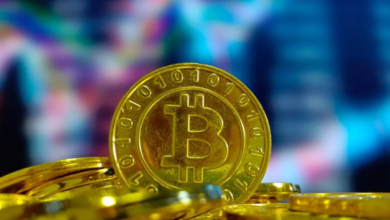Invest in I Bonds Now and Earn 9.62% Risk-Free for 6 Months


Freaking out over inflation?
U.S. government-backed Series I savings bonds — also known as inflation bonds or I bonds — are a nearly risk-free investment that’s rocking a record 9.62% interest rate.
That rate is set to drop to roughly 6.5% on Nov. 1, which means there’s only a short time to lock in that 9.62% rate for the next six months.
The interest rate on I bonds changes every six months, on Nov. 1 and again May 1.
But when you buy an I bond, you lock in the current interest rate for six months from your date of purchase.
So, anyone who buys I bonds by Friday, Oct. 28 will earn 9.62% on their deposit until April 28, 2023. After that, the rate announced Nov. 1 (estimated at 6.5%) will go into effect, and so on.
According to the Treasury Department, you must complete your purchase and receive a confirmation email by 11:59 p.m. October 28 to get the 9.62% rate.
That’s why so many people are pouring money into I bonds this week — they’re trying to secure six more months of 9.62% interest on their savings.
But before you rush to buy I bonds, there are a few things you need to know.
What Are I Bonds?
Series I bonds are the only inflation-protected security sold by the U.S. Treasury Department.
Since I bonds are backed by the full faith and credit of the U.S. government, your risk of losing money is basically zero. (Historically, the U.S. government has never defaulted on bonds.)
At 9.62%, I bonds are not only outpacing inflation, they’re earning more than the stock market and bitcoin this year. (The S&P 500 is down about 23% since the start of 2022 and bitcoin is down 52%.)
At 9.62%, these bonds offer a rate about four times higher than what you’d currently earn from the best high-yield savings accounts.
How Do I Bonds Work?
I bonds are issued by the U.S. government and they can be purchased at TreasuryDirect.gov.
The interest rate on I bonds adjusts twice a year (in May and November) based on changes in the Consumer Price Index.
I bond rates actually combine two different figures:
- A semiannual (twice a year) inflation rate that fluctuates based on changes in the Consumer Price Index.
- A fixed rate of return, which remains the same throughout the life of the bond. (It’s currently at 0%.)
In April 2022, inflation increased 8.5% year-over-year, the biggest surge in more than 40 years.
Check out this chart from the U.S. Treasury to see how I bond rates have changed over time.
Why Is the I Bond Rate Going Down On Nov. 1?
I bonds are tied to inflation. And inflation is still really high.
So why is the I bond rate expected to drop roughly 3 percentage points in November? Because I bonds only look at the increase of inflation over the last six months — not the last year.
Inflation may be 8.2% higher than it was a year ago — but it’s not 8.2% higher than it was six months ago.
Inflation shot up last fall but has plateaued recently, with just 0.1% and 0.0% monthly gains in July and August.
You won’t lose money if the interest rate goes down though — you just won’t earn as much.
9 Must-Know Facts About I Bonds
While I bonds are virtually risk-free, they still come with rules and restrictions.
First, these are 30-year bonds. Your cash isn’t locked up for three decades but you absolutely can’t access your money for at least 12 months. The government won’t allow you to cash out an I bond any sooner.
After a year, you can cash it in, but you’ll lose three months worth of interest if you cash out one to five years after purchase.
I Bond Fast Facts
- I bonds are sold at face value (no fees, sales tax, etc.)
- They earn interest monthly that is compounded twice a year.
- The bond matures (stops earning interest) after 30 years.
- You have to wait at least one year to cash in I bonds.
- You’ll lose three months of interest payments if you cash in a bond you’ve owned for less than five years.
- Minimum investment is $25.
- Maximum digital I bond investment is $10,000 per person, per year.
- The value of your I bond will never drop below what you paid for it.
- I bond interest is exempt from state and municipal taxes.
You can also buy up to $5,000 in paper I bonds per year. The only way to get paper bonds is at tax time with your federal refund.
Speaking of taxes, you can choose to either pay federal income tax on the bond each year or defer tax on the interest until the bond is redeemed.
You may be able to forgo paying federal tax altogether by using the bonds for higher education costs. Your adjusted gross income needs to be under $83,200 for a single filer to qualify for this education tax perk, or $124,800 for couples.
How to Purchase I Bonds
The fastest and easiest way to purchase I bonds is on the TreasuryDirect website. It’s a free and secure platform where you can view all your account information, including pending transactions.
You can also give I bonds as a gift.
Another option is buying I bonds at tax time with your refund. You can buy I bonds in increments of $50 this way. You don’t need to put your entire refund in bonds — you can earmark just part of it.
FYI: You can’t resell I bonds and you must cash them out directly with the U.S. government. Also, only U.S. citizens, residents and employees can purchase these bonds.
The treasury also offers a payroll savings option, which lets you purchase electronic savings bonds with money deducted from your paycheck.
Who Are I Bonds Right For?
There are a few ways investors can benefit from purchasing I bonds at the current 9.62% rate.
Scenarios When It Makes Sense to Buy I Bonds
- You’re worried about inflation and stock market fluctuations.
- You want to diversify your stock-heavy portfolio with a safe investment.
- You’re nearing retirement and are shifting your portfolio toward bonds.
- You want to save money for a child’s future college expenses.
- You’re saving up for a big purchase that’s at least a year away — like the downpayment for a house — and want to earn a little interest on your cash in the meantime.
Because I bonds can’t be cashed in for a year, it’s important to keep enough money in your cash emergency fund to cover immediate expenses.
I bonds won’t make you rich. But for everyday Americans, these investments offer a safe way to grow your cash and hedge against inflation.
Rachel Christian is a Certified Educator in Personal Finance and a senior writer for The Penny Hoarder.
Source link





